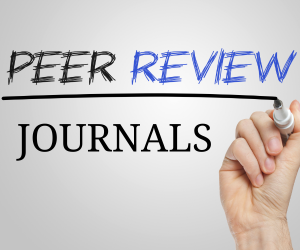ASSOCIATION BETWEEN ALOPECIA AREATA AND COVID-19: A SYSTEMATIC REVIEW
Keywords:
Alopecia areata, covid-19, hair lossAbstract
Objective: Alopecia areata (AA) is an inflammatory condition that damages hair cells and causes hair thinning. COVID19-induced cytokine shift, antigen mimicry between the virus and hair follicles, and COVID-19-induced tissue destruction that revealed autoantigens. This study aims to review the existing literature systematically.
Materials and methods: A systematic search strategy was conducted across several electronic reference databases (PubMed, Cochrane Library, ProQuest) and included articles published between 2020–2023. Duplicate publications, review articles, and incomplete articles were excluded.
Results: Database search yielded a total of 287 articles, which were systematically eliminated, leaving 6 relevant articles. Analyzed articles showed the incidence of alopecia areata (hair loss) in patient post-COVID-19.
Conclusion: COVID-19 is a disease that has very wide clinical manifestations. The mechanism of association between COVID-19 and alopecia areata is unclear. However, several factors can also have an effect, such as race, age, and gender.
References
Wu YC, Chen CS, Chan YJ. The outbreak of COVID-19: An overview. J Chinese Med Assoc. 2020;83(3):217–20.
Zaim S, Chong JH, Kankaranarayanan V, Hasky A. COVID-19 and Multiorgan Response. Curr Probl Cardiol [Internet] 2020;45(1):1–9. Available from: http://journal.um-surabaya.ac.id/index.php/JKM/article/view/2203
Thakur V, Ratho RK, Kumar P, Bhatia SK, Bora I, Mohi GK, et al. Multi-organ involvement in covid-19: Beyond pulmonary manifestations. J Clin Med. 2021;10(3):1–19.
Wei KC, Yang CC. Hair loss and COVID-19. Dermatologica Sin. 2021;39(4):167–8.
Zhou C, Li X, Wang C, Zhang J. Alopecia Areata: an Update on Etiopathogenesis, Diagnosis, and Management. Clin Rev Allergy Immunol [Internet] 2021;61(3):403–23. Available from: https://doi.org/10.1007/s12016-02108883-0
Pratt CH, King LE, Messenger AG, Christiano AM, Sundberg JP. Alopecia areata. Nat Rev Dis Prim [Internet] 2017;3:1–17. Available from: http://dx.doi.org/10.1038/nrdp.2017.11
Genovese G, Moltrasio C, Berti E, Marzano AV. Skin Manifestations Associated with COVID-19: Current Knowledge and Future Perspectives. Dermatology. 2021;237(1):1–12.
Mukherjee S, Kshirsagar M, Becker N, Xu Y, Weeks WB, Patel S, et al. Identifying long-term effects of SARSCoV-2 and their association with social determinants of health in a cohort of over one million COVID-19 survivors. BMC Public Health [Internet] 2022;22(1):1–10. Available from: https://doi.org/10.1186/s12889-022-14806-1
Phong CH, Babadjouni A, Nguyen C, Kraus CN, Mesinkovska NA. Not just thinning: A case of alopecia universalis after mild COVID-19. JAAD Case Reports [Internet] 2022;25:1–3. Available from: https://doi.org/10.1016/j.jdcr. 2022.04.024
Alkeraye S, Alrashidi A, Alotaibi NS, Almajli N, Alkhalifah B, Bajunaid N, et al. The Association Between Hair Loss and COVID-19: The Impact of Hair Loss After COVID-19 Infection on the Quality of Life Among Residents in Saudi Arabia. Cureus. 2022;2(10).
Hayran Y, Yorulmaz A, Gür G, Aktaş A. Different hair loss patterns in two pediatric patients with COVID-19associated multisystem inflammatory syndrome in children. Dermatol Ther. 2021;34(2):1–2.
Rinaldi F, Trink A, Giuliani G, Pinto D. Italian Survey for the Evaluation of the Effects of Coronavirus Disease 2019 (COVID-19) Pandemic on Alopecia Areata Recurrence. Dermatol Ther (Heidelb) [Internet] 2021;11(2):339–45. Available from: https://doi.org/10.1007/s13555-021-00498-9
Kim J, Hong K, Gómez Gómez RE, Kim S, Chun BC. Lack of Evidence of COVID-19 Being a Risk Factor of Alopecia Areata: Results of a National Cohort Study in South Korea. Front Med. 2021;8(October):1–7.
Sgubbi P, Savoia F, Calderoni O, Longo R, Stinchi C, Tabanelli M. Alopecia areata in a patient with SARS-Cov-2 infection. Dermatol Ther. 2020;33(6):7–8.
Olayinka J (Jadé) T, Richmond JM. Immunopathogenesis of alopecia areata. Curr Res Immunol. 2021;2(January):7– 11.
Lin X, Zhu L, He J. Morphogenesis, Growth Cycle and Molecular Regulation of Hair Follicles. Front Cell Dev Biol. 2022;10(May):1–11.
Houschyar KS, Borrelli MR, Tapking C, Popp D, Puladi B, Ooms M, et al. Molecular Mechanisms of Hair Growth and Regeneration: Current Understanding and Novel Paradigms. Dermatology. 2020;236(4):271–80.
Christensen RE, Jafferany M. Association between alopecia areata and COVID-19: A systematic review. JAAD Int [Internet] 2022;7:57–61. Available from: https://doi.org/10.1016/j.jdin.2022.02.002
Rossi A, Magri F, Michelini S, Sernicola A, Muscianese M, Caro G, et al. New onset of alopecia areata in a patient with SARS-CoV-2 infection: Possible pathogenetic correlations? J Cosmet Dermatol. 2021;20(7):2004–5.
Birkett L, Singh P, Mosahebi A, Dhar S. Possible Associations Between Alopecia Areata and COVID-19 Vaccination and Infection. Aesthetic Surg J. 2022;42(11):NP699–702.
Downloads
Published
Issue
Section
License

This work is licensed under a Creative Commons Attribution 4.0 International License.
Licensing
Ninety Nine Publication publishes articles under the Creative Commons Attribution 4.0 International License (CC BY 4.0). This licensing allows for any use of the work, provided the original author(s) and source are credited, thereby facilitating the free exchange and use of research for the advancement of knowledge.
Detailed Licensing Terms
Attribution (BY): Users must give appropriate credit, provide a link to the license, and indicate if changes were made. Users may do so in any reasonable manner, but not in any way that suggests the licensor endorses them or their use.
No Additional Restrictions: Users may not apply legal terms or technological measures that legally restrict others from doing anything the license permits.





